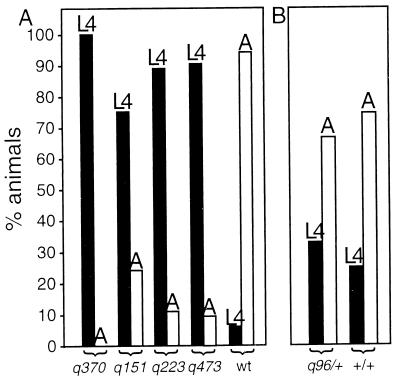FIG. 5.
mog-1 mutants grow more slowly than the wild type. Black bars represent L4 larvae, and white bars indicate adults. L4 larvae were distinguished from adults (A) by standard features of vulval development (43). The y axis represents the percentage of animals that have reached adulthood or the fourth larval stage. For the numbers of animals tested, refer to Materials and Methods. (A) Four different mog-1 mutants and the wild type (wt) were examined for the developmental stage reached after 72 h at 20°C. Whereas most wild-type animals had reached adulthood, most mog-1 mutants had only reached the fourth larval stage. (B) As a control, fem-3(gf) mutants (which have a Mog phenotype) and fertile wild-type animals were compared after 48 h at 25°C. No significant difference was observed, suggesting that the slow-growth phenotype is associated with mog-1 rather than with the production of sperm instead of oocytes.

